Vietnam, a land of astonishing diversity and captivating scenic beauty, is blessed with an abundance of natural wonders in Vietnam. From the emerald waters and towering limestone karsts of Ha Long Bay to the majestic peaks of the Hoang Lien Son mountains (Tonkinese Alps) near Sapa, and the vibrant, life-giving waters of the Mekong Delta, the country’s landscapes showcase nature’s artistry at its finest. This guide invites Indian travellers planning their Vietnam tours to explore these magnificent natural formations, delve into their unique geological features, rich biodiversity, and discover the best ways to experience their vastness and inherent uniqueness.
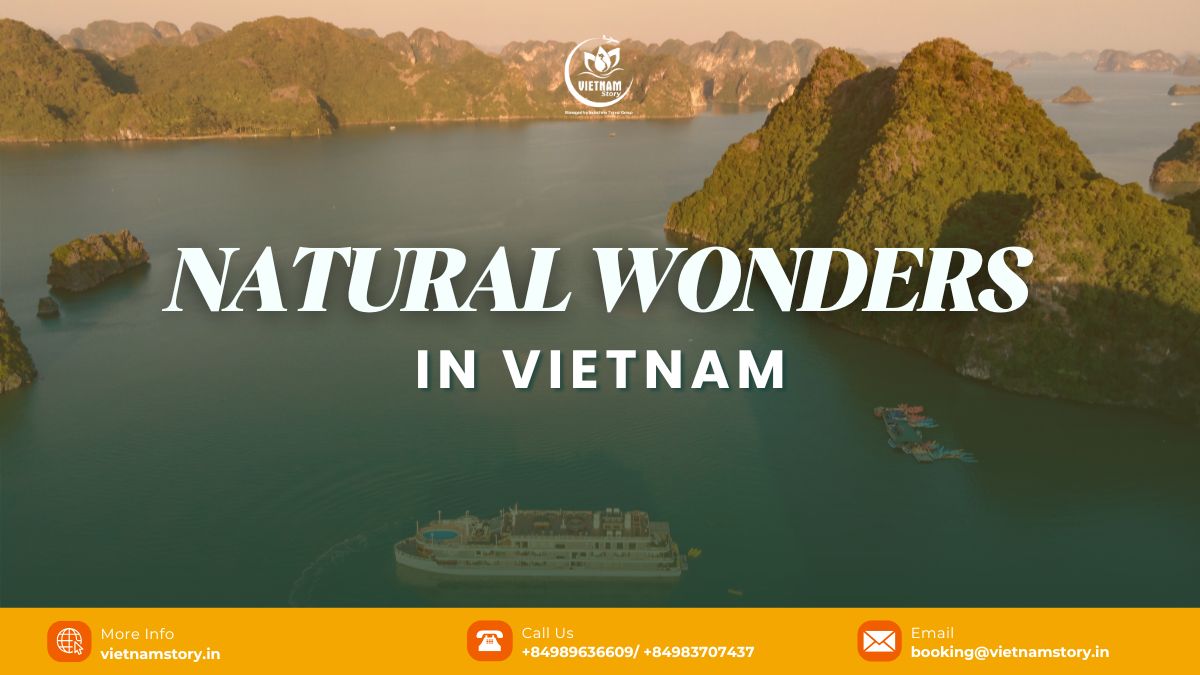
The Unforgettable Allure of Vietnam’s Natural Landscapes
Vietnam’s magnetic appeal for tourists, especially those from India seeking unique travel experiences, is deeply rooted in its stunning natural beauty. This breathtaking mosaic results from the country’s diverse geography, stretching north to south and encompassing mountains, rivers, coastlines, and islands. Its iconic “S” shape creates diverse climates, fostering an incredible range of natural wonders perfect for outdoor activities and adventure travel.
Recognized as a global biodiversity hotspot, Vietnam shelters a remarkable array of plant and animal species, making its national parks and nature reserves vital havens for ecotourism. Many of these natural wonders are not just visually stunning but also hold deep cultural significance. The increasing popularity means balancing tourism benefits with crucial conservation, a commitment highlighted by several UNESCO World Heritage Site designations.
READ MORE: A guide to the best resorts in Vietnam
Exploring the Gems: A Detailed Look at Key Natural Wonders in Vietnam
Embark on a journey through Vietnam’s most iconic and awe-inspiring natural wonders, perfect destinations for your next tour.
Coastal Wonders & Bays: Where Karst Limestone Meets Shimmering Seas
Vietnam’s extensive coastline offers some of the world’s most spectacular bays and islands, featuring dramatic karst limestone formations and pristine beaches.
Ha Long Bay (Quang Ninh Province): A UNESCO World Heritage Masterpiece
Arguably Vietnam’s most recognised landscape, Ha Long Bay is a must-visit natural wonder in Vietnam. Designated a UNESCO World Heritage Site, this breathtaking seascape in Northern Vietnam features over 1,600 limestone islands and islets rising dramatically from emerald waters. It’s a geological marvel dotted with hidden caveslike Thien Cung and Dau Go, adorned with intricate stalactites and stalagmites.
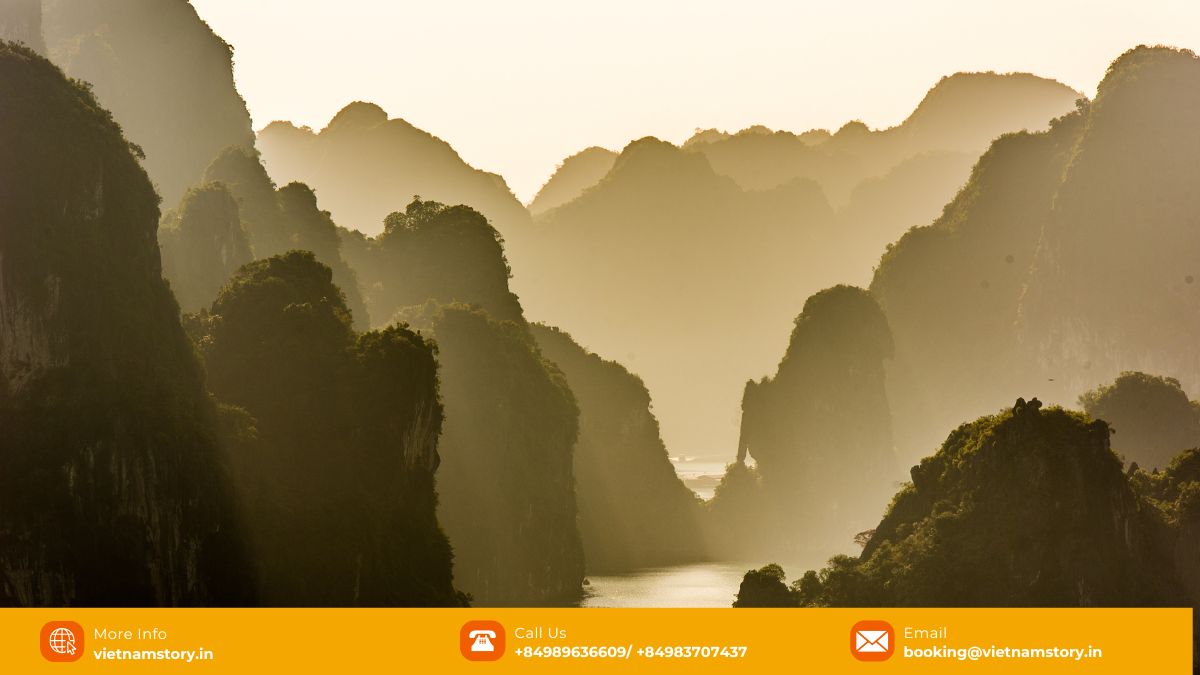
The bay supports diverse ecosystems and offers unforgettable experiences like overnight cruises on traditional junks, kayaking through lagoons, and exploring fascinating grottoes. Located just 170 km from Hanoi, it’s easily accessible for day trips or longer excursions. For a less crowded but equally stunning alternative, consider nearby Lan Ha Bay or Bai Tu Long Bay.
Phu Quoc Island (Kien Giang Province): Vietnam’s Island Paradise
Phu Quoc, Vietnam’s largest island, located in the Gulf of Thailand, is a desirable tropical paradise. It’s famed for its white-sand beaches like the stunning Bai Sao Beach, crystal-clear waters ideal for snorkeling and diving, and a laid-back atmosphere perfect for relaxation. Over 70% of the island is protected as Phu Quoc National Park, preserving its lush forests and diverse wildlife.
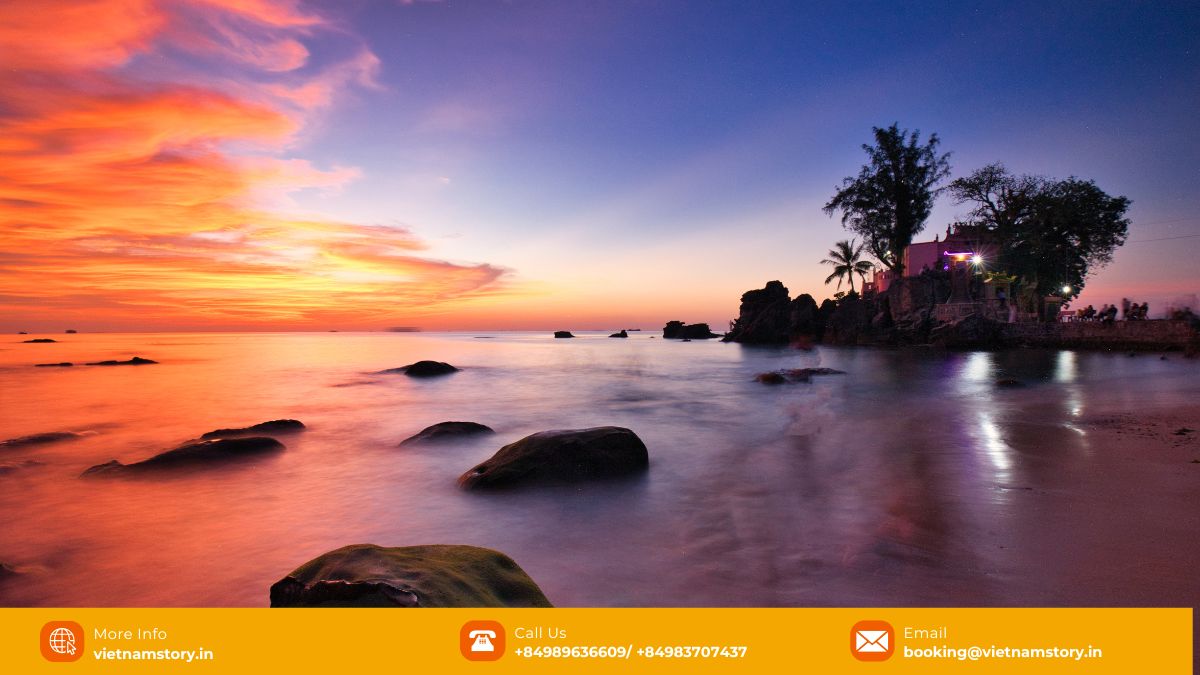
Beyond its natural beauty, Phu Quoc offers cultural insights with its fish sauce factories and pepper plantations. Easily accessible via Phu Quoc International Airport, it’s a top destination for sun-seekers and nature lovers.
Mui Ne Sand Dunes (Binh Thuan Province): A Taste of the Sahara
Experience a landscape unlike any other in Vietnam at the Mui Ne Sand Dunes. This unique natural wonder in Vietnam offers a surprising Sahara-like desert landscape featuring distinct red and white sand dunes sculpted by wind. It’s a popular spot for thrilling activities like sandboarding (sleds often available for rent) and quad biking. The best times to visit are early morning or late afternoon to avoid the heat and capture stunning photographs. Located near Phan Thiet city, it’s easily reachable from Ho Chi Minh City.
Con Dao Islands(Ba Ria-Vung Tau Province): Untouched Islets & Turtle Sanctuaries
Comprising 16 uninhabited islets off the southern coast, the Con Dao Islands offer expansive, pristine beachesshaded by evergreen trees. Once a prison site, today it’s a tranquil spot perfect for snorkeling, diving, and swimming. The more remote islands are renowned turtle breeding sites, offering a unique chance to witness nesting (especially between June and September).
Mountains & Highlands: Majestic Peaks and Verdant Valleys
Vietnam’s northern and central highlands offer breathtaking mountain scenery, challenging treks, and unique cultural encounters amidst stunning natural formations.
Fansipan Mountain & Sapa (Lao Cai Province): The Roof of Indochina & Terraced Fields
Part of the spectacular Hoang Lien Son range (Tonkinese Alps), Fansipan Mountain is Indochina’s highest peak, soaring to 3,147 meters. Reaching the summit offers breathtaking views of northwestern Vietnam. While a challenging multi-day hiking excursion is possible (best between October and March), a modern cable car now provides easier access near the vibrant mountain town of Sapa.
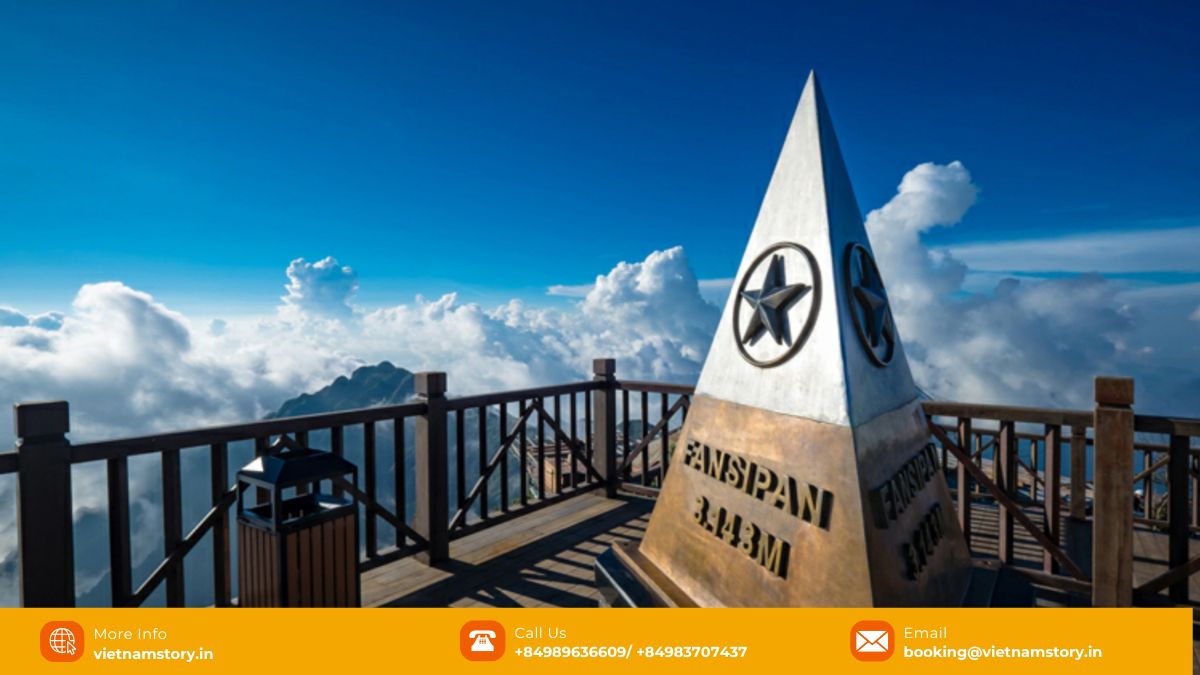
Equally captivating are Sapa’s terraced rice fields. Carved into steep hillsides by ethnic minority groups like the Hmong and Red Dzao over generations, these fields create a stunning, undulating landscape, especially vibrant during the harvest season (September-October). Trekking through these fields offers incredible photo opportunities and cultural immersion.
Phong Nha-Ke Bang National Park (Quang Binh Province): A Karst & Cave Wonderland
A UNESCO World Heritage Site, Phong Nha-Ke Bang National Park protects one of the world’s largest and most spectacular karst landscapes, approximately 500 km south of Hanoi. This region is riddled with hundreds of cave systems, including the relatively accessible Paradise Cave (Thien Duong Cave) and Phong Nha Cave, famed for their colossal chambers and stunning stalactite and stalagmite formations.
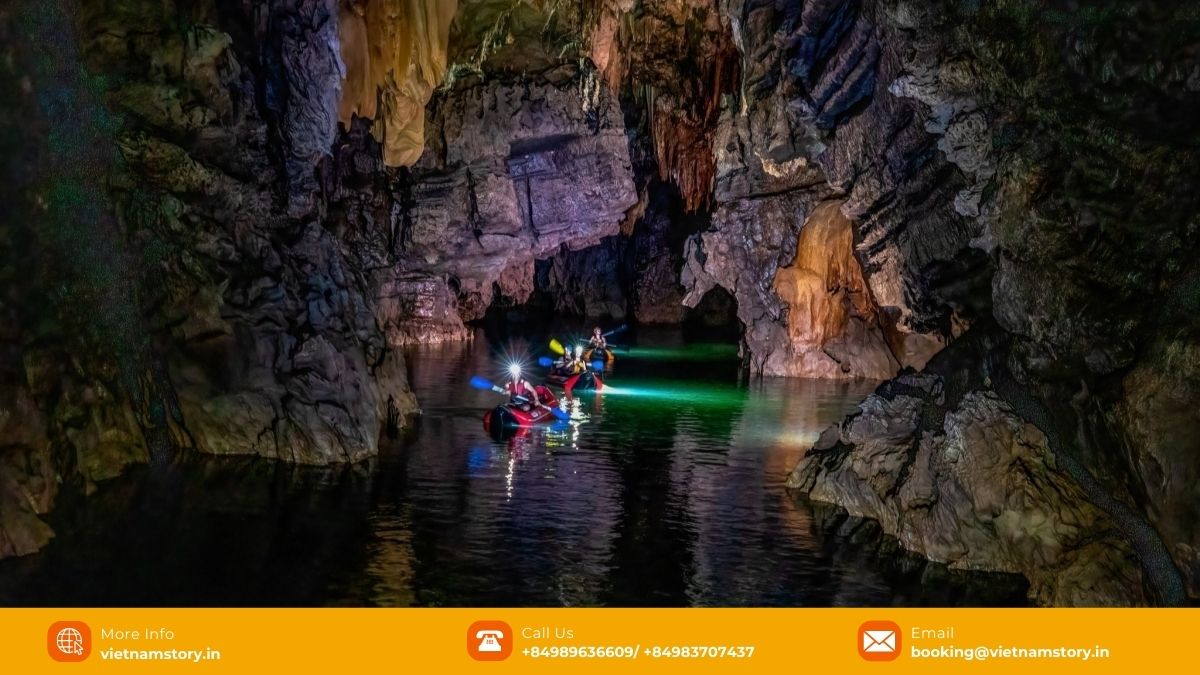
The park also boasts extensive jungle trekking routes and is home to the legendary Son Doong Cave, known as the world’s largest natural cave. Access to Son Doong is via exclusive, multi-day expeditions requiring good fitness and advance booking, offering a truly unique adventure into a subterranean world with its own jungle and climate.
READ MORE: A journey to discover majestic waterfalls in Vietnam
Marble Mountains (Da Nang City): Spiritual Peaks of Stone
Near Da Nang, the Marble Mountains are a cluster of five marble and limestone hills, each named after one of the five elements. Riddled with natural caves and tunnels converted into Buddhist sanctuaries and pagodas, they offer a unique blend of natural beauty and cultural heritage. Easily accessible, they provide panoramic views and a glimpse into centuries of stone carving traditions.
Rivers, Lakes & Waterfalls: Vietnam’s Flowing Lifeblood
From the mighty Mekong to serene lakes and dramatic cascades, Vietnam’s waterways are vital ecosystems and stunning natural attractions.
Mekong Delta (Southern Vietnam): The River of Nine Dragons
The vast Mekong Delta is a fertile region formed by the intricate network of the Mekong River’s tributaries. Known as the “River of Nine Dragons,” this area is characterized by winding river canals, lush rice paddies, mangrove forests, and vibrant floating markets. Experiencing the local way of life through boat tours, visiting fruit orchards, and enjoying local cuisine provides an authentic glimpse into this vital natural wonder in Vietnam. Day trips and overnight stays are easily arranged from Ho Chi Minh City.
Ban Gioc Waterfall (Cao Bang Province): A Majestic Border Cascade
Located on the border with China, Ban Gioc Waterfall is one of Vietnam’s most spectacular waterfalls. Fed by the Quay Son River, the falls cascade over multiple tiers amidst lush greenery. It’s particularly impressive during the rainy season (June-September). Taking a bamboo raft trip gets you closer to the thundering water and mist. The surrounding landscape of karst peaks and rice fields adds to its picturesque beauty.
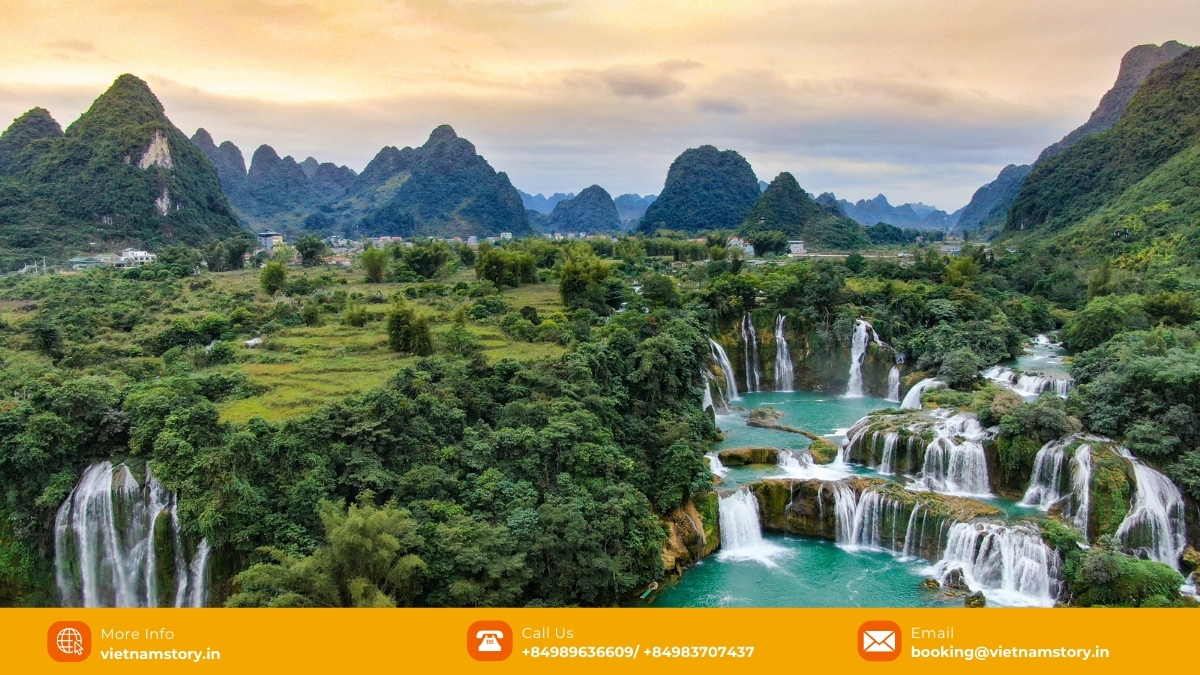
Ba Be National Park & Lake (Bac Kan Province): Serene Waters Amidst Karsts
Home to Ba Be Lake, Vietnam’s largest natural freshwater lake, Ba Be National Park offers a tranquil escape just a few hours from Hanoi. Surrounded by limestone karsts and dense forests, the park is ideal for boat trips on the lake, exploring caves like Puong Cave, visiting waterfalls, and trekking. It’s a haven for biodiversity and home to ethnic Tay villages offering unique homestay experiences.
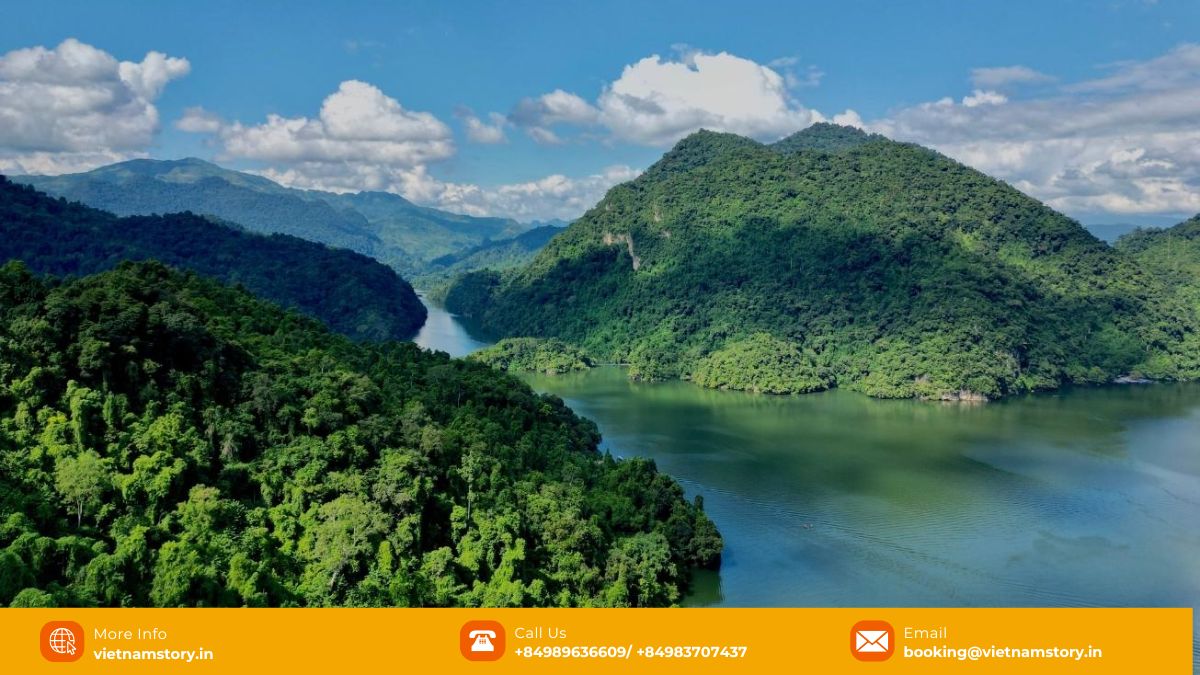
Thac Bac Waterfall (Silver Falls, Sapa): Shimmering Mountain Stream
Located about 11 km west of Sapa town, Thac Bac Waterfall (Silver Falls) is a stunning 200-metre-tall cascade. Its name reflects the shimmering appearance of the water flowing down the Lo Sui Tong mountain. Easily accessible, it offers a refreshing stop with opportunities for short hikes and enjoying the cool mountain air amidst lush surroundings.
Other Notable Natural Landscapes
Tam Coc (Ninh Binh Province): “Ha Long Bay on Land”
Often referred to as “Ha Long Bay on Land,” Tam Coc in Ninh Binh province features dramatic limestone karsts rising directly from vibrant rice paddies. A serene boat trip along the Ngo Dong River, passing through natural caves, is the best way to experience this picturesque landscape, part of the UNESCO-listed Trang An Landscape Complex.
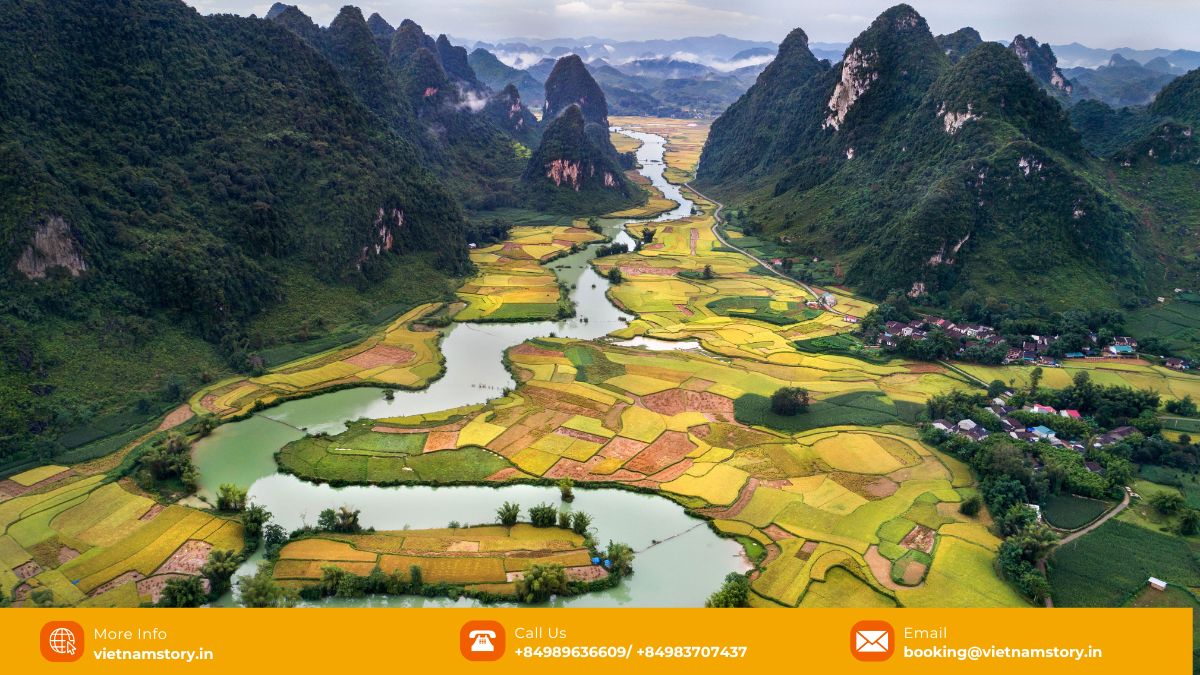
Cuc Phuong National Park (Ninh Binh Province): Vietnam’s Oldest National Park
Established in 1962, Cuc Phuong National Park is Vietnam’s largest and oldest nature reserve. It’s a vital center for biodiversity, housing thousands of plant and animal species, including rare primates at the Endangered Primate Rescue Center. Explore hiking trails, visit ancient trees, discover caves, and learn about conservation efforts. It’s easily reachable from Hanoi.
READ MORE: Unveiling Vietnam’s treasures through UNESCO World Heritage Sites
Conservation Efforts: Protecting Vietnam’s Natural Heritage
Preserving these invaluable natural wonders in Vietnam requires ongoing effort. Vietnam utilizes a network of protected areas, promotes sustainable tourism practices, combats illegal wildlife trade, and addresses challenges like climate change impacts and pollution to safeguard its natural heritage for future generations and ensure visitors can continue to enjoy these incredible landscapes responsibly.
Conclusion: Your Vietnam Adventure Awaits
The diverse and breathtaking natural wonders in Vietnam offer unparalleled experiences for every traveller from India. From the iconic seascapes of Ha Long Bay and the subterranean marvels of Phong Nha-Ke Bang and Son Doong Cave, to the mountainous vistas of Sapa and the idyllic beaches of Phu Quoc, Vietnam promises adventure, beauty, and unforgettable memories. As you plan your tour, consider exploring these natural treasures, appreciating their geological significance, rich biodiversity, and the importance of their conservation. Let Vietnam’s natural beauty inspire your next journey!